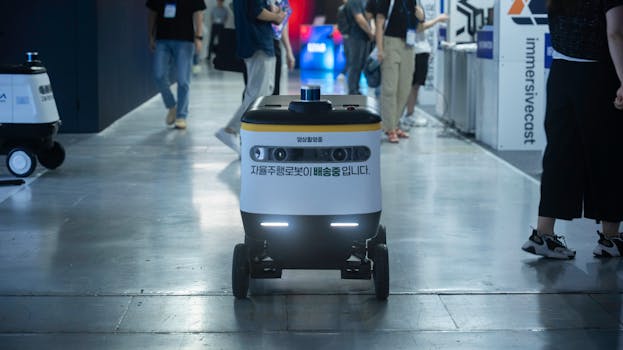Doge AI Tool Government Automation: Revolutionizing Public Services
Introduction
Ever wondered if government services could be as smooth and responsive as your favorite online interactions? The efficiency of bureaucratic processes has long been a point of discussion, often met with a sigh. But what if we told you that a surprising new player, inspired by a beloved internet meme, is poised to change the game? We’re talking about how the Doge AI tool is set to power government automation, promising a future of faster, smarter, and more citizen-centric public services.
In this deep dive, we’ll explore what exactly Doge AI means in the context of public administration, unravel the incredible potential it holds for automating complex governmental tasks, and look at how this innovative approach is already starting to reshape how governments operate. Get ready to discover how a playful internet phenomenon is leading the charge in making our governments work better for everyone.
What is Doge AI Tool Government Automation?
Let’s get one thing straight: when we say “Doge AI,” we’re not talking about a Shiba Inu controlling policy decisions! Instead, the term Doge AI tool in the context of government automation refers to a new generation of artificial intelligence platforms designed to streamline, optimize, and automate a vast array of public sector functions. The “Doge” in this context is more of a nod to the accessible, innovative, and sometimes quirky spirit of technological advancement, much like the meme itself became a global cultural touchstone.
Think of it as AI that’s not just powerful but also designed with user-friendliness and broad applicability in mind. This isn’t about replacing human decision-making but about augmenting it, freeing up public servants from tedious, repetitive tasks so they can focus on more strategic and impactful work. The goal is to leverage AI to make government more agile, transparent, and efficient, ultimately benefiting citizens directly.
Why is this relevant today? Governments worldwide are facing increasing demands with often stretched resources. Citizens expect faster responses, more personalized services, and greater transparency. Traditional methods of operation can struggle to keep up. This is where the promise of Doge AI tool government automation truly shines, offering a pathway to address these challenges head-on.

The Power of AI in Modernizing Government
The application of artificial intelligence within the public sector is not entirely new, but the sophistication and accessibility of tools like those we are beginning to see under the “Doge AI” umbrella are truly transformative. These advancements are enabling governments to tackle problems that were once considered insurmountable.
Here’s a closer look at some key areas where AI is making a significant impact:
- Automating Routine Administrative Tasks: Imagine forms being processed instantly, inquiries being answered by intelligent chatbots 24/7, and data entry errors being a thing of the past. This is the immediate promise of Doge AI tool government automation for day-to-day operations.
- Improving Citizen Services: AI can personalize interactions, guide citizens through complex application processes, and provide tailored information based on individual needs. This leads to a more positive and efficient experience for everyone.
- Enhancing Data Analysis and Decision-Making: Governments deal with massive datasets. AI can analyze this data to identify trends, predict outcomes, and provide insights that lead to better policy decisions and resource allocation. The ability to process and understand large volumes of data is a game-changer.
- Streamlining Regulatory Compliance: From environmental monitoring to financial oversight, AI can help ensure that regulations are met efficiently and effectively, reducing the burden on both businesses and government agencies.
- Optimizing Infrastructure Management: AI can be used to predict maintenance needs for roads, bridges, and public utilities, preventing costly breakdowns and ensuring continuous service.
- Boosting Cybersecurity: As governments become more digital, protecting sensitive data is paramount. AI can detect and respond to cyber threats much faster than traditional methods.
The beauty of the Doge AI tool approach is its potential for rapid deployment and adaptation. It’s about making sophisticated AI capabilities accessible, allowing various government departments to leverage these powerful tools without needing extensive in-house AI expertise. This democratization of AI is key to widespread adoption.

Diving Deeper: Key Features and Benefits
The impact of Doge AI tool government automation goes far beyond simply doing things faster. It fundamentally changes the way government functions. Let’s explore some of the core benefits and features that make this approach so compelling.
Intelligent Document Processing
AI-powered tools can now read, understand, and process a wide variety of documents, from citizen applications to legal statutes.
- Benefit: Drastically reduces manual data entry and the associated errors.
- Tip: Governments can use this to speed up permit applications, tax filings, and benefit claims.
- Key Advantage: Accuracy and speed in handling paperwork.
Conversational AI and Chatbots
Advanced chatbots can handle citizen inquiries with natural language understanding.
- Benefit: Provides instant, 24/7 support to citizens, answering common questions and guiding them to resources.
- Strategy: Deploy chatbots on government websites and social media channels.
- Crucial Point: Improves citizen satisfaction and reduces strain on call centers.
Predictive Analytics for Resource Allocation
AI can analyze historical data to forecast future needs and optimize resource distribution.
- Benefit: Ensures efficient allocation of public funds and personnel.
- Example: Predicting demand for public transport during peak hours or anticipating the need for emergency services in certain areas.
- Core Impact: Smarter budgeting and operational planning.
Automated Workflow Management
AI can orchestrate complex workflows, ensuring tasks are completed in the right order and by the right people.
- Benefit: Minimizes bottlenecks and delays in bureaucratic processes.
- Tip: Automate the routing of approvals, notifications, and follow-ups.
- Significant Improvement: Increases overall governmental efficiency.
Fraud Detection and Prevention
AI algorithms can identify anomalies and patterns indicative of fraudulent activity.
- Benefit: Protects public funds by detecting and flagging suspicious transactions or claims.
- Application: Can be applied to welfare benefits, tax fraud, and procurement processes.
- Essential Function: Enhances integrity and accountability in public spending.
The widespread adoption of these capabilities through accessible Doge AI tool government automation platforms means that governments can achieve a level of operational excellence previously thought unattainable.
Real-World Applications: How Doge AI is Already Making a Difference
The theoretical benefits of Doge AI tool government automation are impressive, but seeing it in action is even more compelling. While specific “Doge AI” branded products might be emerging, the underlying principles are already being implemented in innovative ways across the public sector.
Consider the city of Singapore, which has been a pioneer in leveraging AI for smart governance. They use AI for traffic management, optimizing signal timings to reduce congestion. In healthcare, AI assists in analyzing medical images, speeding up diagnoses. These aren’t necessarily labeled “Doge AI,” but they embody the spirit of accessible, powerful AI transforming public services.
Imagine a local municipality using an AI tool to automate the processing of building permits. Instead of waiting weeks for manual review, an AI system can check applications against zoning laws and building codes in minutes, flagging any discrepancies for human review. This significantly speeds up development and job creation.
Another example could be a national tax agency using AI to identify potential tax evasion. By analyzing millions of tax returns and comparing them against public and private data, the AI can highlight high-risk cases for human auditors to investigate, thus recovering more revenue for public services.
The potential is vast. For more on how AI is transforming specific sectors, you might find our Brookings Institution’s AI topic page, which often discusses policy implications and real-world examples.

The Road Ahead: Challenges and Opportunities
While the promise of Doge AI tool government automation is immense, it’s important to acknowledge that this journey isn’t without its hurdles. Successful implementation requires careful planning, investment, and consideration of various factors.
| Pros | Cons |
|---|---|
| ➕ Increased Efficiency and Speed | ➖ Data Privacy and Security Concerns |
| ➕ Cost Savings in the Long Run | ➖ Potential for Job Displacement |
| ➕ Improved Accuracy and Reduced Errors | ➖ High Initial Investment Costs |
| ➕ Enhanced Citizen Satisfaction | ➖ Need for Skilled Workforce to Manage AI Systems |
| ➕ Better Data-Driven Decision Making | ➖ Ethical Considerations and Bias in AI Algorithms |
Addressing these challenges is crucial for unlocking the full potential of Doge AI tool government automation. Governments need to invest in training their workforce, ensuring robust cybersecurity measures, and developing clear ethical guidelines for AI use. Transparency and public engagement are also vital to build trust and acceptance.
The opportunity lies in creating governments that are more responsive, efficient, and equitable. By embracing these technological advancements, we can build public services that truly serve the needs of modern society. The evolution of Doge AI tool government automation is a testament to how innovative thinking can lead to significant improvements in public administration.
Conclusion
The integration of AI, particularly through accessible and powerful platforms that we can think of as the Doge AI tool ecosystem, is set to redefine government automation. We’ve explored how these technologies can streamline operations, enhance citizen services, and improve decision-making across the public sector. From automating routine tasks to providing sophisticated data analysis, the benefits are far-reaching.
While challenges such as data security and workforce adaptation exist, the overarching potential for more efficient, responsive, and citizen-centric governments is undeniable. The future of public services is increasingly intelligent, and the spirit of innovation, much like the meme that inspired its name, is driving this exciting transformation.
So, what’s next? It’s time for governments to explore these tools, invest in the necessary infrastructure and training, and engage citizens in this evolutionary process. The journey towards smarter governance is underway, and AI is leading the way. Are you ready to witness the future of public service? Keep an eye on how the Doge AI tool and similar innovations continue to shape our world.